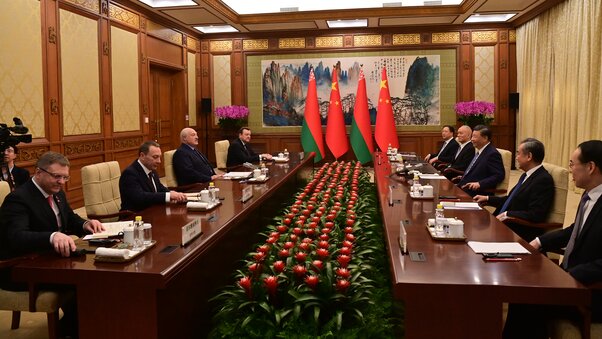Second day of official visit to Equatorial Guinea
- 19
- 3:30
On the second day of his official visit, Belarusian President Aleksandr Lukashenko travelled from the capital city of Malabo to the mainland of Equatorial Guinea.
The aircraft of the Belarusian head of state landed at the airport of Mengomeyen. Aleksandr Lukashenko was welcomed by President Teodoro Obiang Nguema Mbasogo at the airport. He invited the Belarusian leader to see the new capital of Equatorial Guinea, Ciudad de la Paz, which name is translated from Spanish as the City of Peace.
The presidents decided to travel around the future capital in one car. During the drive through the future capital, the president of Equatorial Guinea showed the Belarusian head of state the Afro-American University of Central Africa, the La Paz Oyala Hospital, and the Government House.
The communication between the leaders of the countries continued over an informal lunch. Despite the lighter format, Aleksandr Lukashenko and Teodoro Obiang Nguema Mbasogo continued a serious conversation on the development of bilateral cooperation.
The Belarusian head of state also spoke with the First Lady of Equatorial Guinea Constancia Mangue de Obiang, who has already visited Belarus, and who oversees the medical sector in her country.
Equatorial Guinea is located in the central part of Africa, on the western coast of the continent. The country consists of the continental part and islands in the Gulf of Guinea (with the total area of about 28,000 square kilometers, including 26,000 square kilometers of the mainland). The largest island, Bioko, is home to the capital city of Malabo, where Aleksandr Lukashenko arrived the day before and where he held official talks with President Teodoro Obiang Nguema Mbasogo on 9 December.
A project is currently underway in Equatorial Guinea to build a new capital to replace Malabo. The city is located in the east of the continental part of the country and used to be called Ojala, but in 2020 it was renamed Ciudad de la Paz (City of Peace). The initiative to move the capital was put forward by the president of Equatorial Guinea. It is assumed that the new capital will combine new trends in architecture and traditional cultural elements, promoting the identity of the city. It is expected that renewable energy sources will play a large role in the urban economy.


